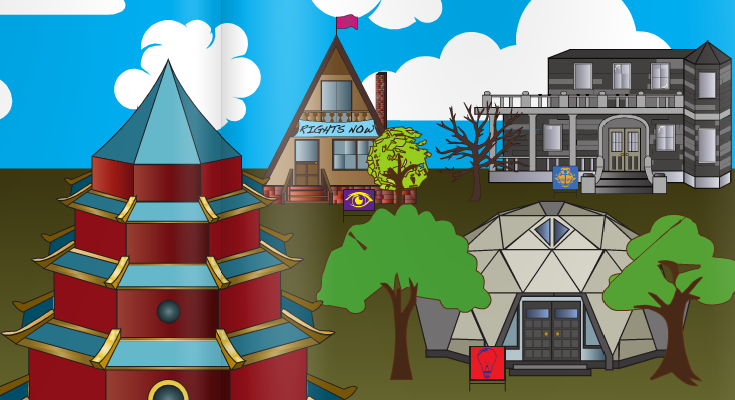 With a degree in both theology and biology, Dr. Dean-Drummond seeks to highlight the liberal arts education with the Neighborhoods novelty.
With a degree in both theology and biology, Dr. Dean-Drummond seeks to highlight the liberal arts education with the Neighborhoods novelty.
The theme of the day was wonder and curiosity as freshmen examined the concepts’ educational importance. Directing the group discussion, Dr. Celia Deane-Drummond of Notre Dame shared with them her experience with the two, relating it to the integrated approach of the new Neighborhood system.
Rollins College intends the Neighborhoods to change how students see general education courses. By linking them under a common theme, it seeks to rejuvenate a wavering interest in the liberal arts as a whole.
“The difficulty for any educator, I think, is to arouse wonder and curiosity in the students,” said Deane-Drummond, “My task as an educator is to not let them be content with that mechanistic approach to learning.”
With a degree in theology and in biology, Deane-Drummond essentially majored in wonder and curiosity. Needless to say, she was in her element during the discussion.
She began by asking the audience to think of some examples of wonder derived from chaotic or orderly phenomenon. One student chose the atomic bomb.
That was exactly the response she wanted. For her, nuclear energy is a prime example of integrating the liberal arts with different fields, such as the sciences. Ethics becomes quite important when scientific developments change lives, to say nothing of ending lives.
“In science, it’s not value free,” said Dr. Deane-Drummond. “There are values behind the science, and there are people behind those values.”
A broad, interconnected view of the liberal arts is another goal of the Neighborhoods. This encourages students to see their subject in the bigger picture and, more importantly, to see themselves in the grander scheme of things.
Likewise, the doctor led her audience to think about the role wonder and curiosity plays in their own lives by presenting a history of the concepts’ examination from Aristotle to Mary Midgley.
Wonder and curiosity, the doctor explained, have been debated for a long time. Some viewed only religious wonder of creation as good, condemning curiosity as immoral and uncontrolled. Others saw wonder as pure ignorance and curiosity as sophisticated. She disagrees with both.
“I would prefer to go back to an era where the two were combined rather than separated,” declared the professor.
All people passionate about their subject likely were enthralled before they understood it, which increased their desire to know more. Knowing more about it, they probably lost some of their initial wonder. But they almost certainly would have lost their passion as well if wonder had abandoned them entirely, a view biochemistry major Ava Benham ’18 shares.
“I definitely think both ways drive you and motivate you,” she states, and “I feel one day I’ll feel less passionate about things, but there’ll always be room” for wonder.
If Neighborhoods succeed in inspiring students to feel for other disciplines the wonder they have for their own, that would only spell good for the liberal arts. Students of the liberal arts, driven by wonder and curiosity, would stop learning if they lost these motivations. According to Mary Midgely, a combination of wonder and curiosity create a goal that the seeker of knowledge strives for. “On it the seeker’s spirit feeds, and without it, that spirit would starve.”






Be First to Comment